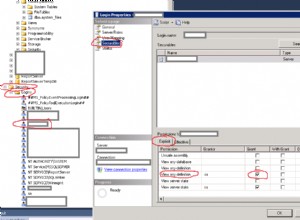Usa el INTERVAL escriba a él. Por ejemplo:
--yesterday
SELECT NOW() - INTERVAL '1 DAY';
--Unrelated: PostgreSQL also supports some interesting shortcuts:
SELECT
'yesterday'::TIMESTAMP,
'tomorrow'::TIMESTAMP,
'allballs'::TIME AS aka_midnight;
Puede hacer lo siguiente entonces:
SELECT
org_id,
count(accounts) AS COUNT,
((date_at) - INTERVAL '1 DAY') AS dateat
FROM
sourcetable
WHERE
date_at <= now() - INTERVAL '130 DAYS'
GROUP BY
org_id,
dateat;
CONSEJOS
Consejo 1
Puede agregar múltiples operandos. Por ejemplo:¿cómo obtener el último día del mes actual?
SELECT date_trunc('MONTH', CURRENT_DATE) + INTERVAL '1 MONTH - 1 DAY';
Consejo 2
También puedes crear un intervalo usando make_interval función, útil cuando necesita crearla en tiempo de ejecución (sin usar literales):
SELECT make_interval(days => 10 + 2);
SELECT make_interval(days => 1, hours => 2);
SELECT make_interval(0, 1, 0, 5, 0, 0, 0.0);
Más información:
Funciones y operadores de fecha/hora
tipo de datos-fechahora (Valores especiales) .




